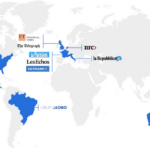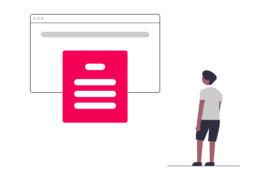We regularly receive queries from publishers using Google AdX about how to get their suspended accounts restored. Google has an appeal form that publishers can fill if they think the account closure was made in error and not because of an active policy violation or simply publisher negligence. Once the appeal is reviewed and a decision has been made, Google does not consider further appeals or communications.
Google is focussed on maintaining high-quality inventory on the Ad Exchange and it can be notoriously difficult to have your account restored after invalid activity or policy violations as such, so the best thing publishers can do is be proactive in ensuring policy compliance.
Here are the most common reasons for AdX account closures:
1. Generating or buying bot traffic
Artificial clicks and impressions that are generated though bots or deceptive software designed to inflate pageviews are grounds for immediate suspension in Google AdX. Automated traffic can be fraudulently generated by the publisher or a directed to the website by a third-party. Google recommends reviewing your traffic sources on an ongoing basis for quality to weed out automated traffic.
2. Participating in incentivized traffic programs
There are programs that offer incentives for users to browse websites or click on ads, these are variously known as paid-to-click, paid-to-surf, auto-surf, and click-exchange programs. Such incentivized programs are wasteful for advertisers as the users typically have no interest in the ads that they are clicking on for profit. In order to keep the pool of inventory clean, AdX closes any accounts associating with such traffic.
3. Manipulating how the ads are served
Any attempt by the publisher to manipulate the targeting of ads, including stuffing keywords not related to the real content of the website, is a red flag for Google. It is also prohibited to place ads with iFrame as improper placements can create reporting discrepancies in Google AdX. Publishers should read the ad placement guides and instructions provided by AdX and stick to them.
4. Encouraging users to click on ads
Publishers should not make any implicit or explicit requests of users to refresh the ads or click on them, this includes asking users to support your website or offering them a reward for viewing ads. User interaction with ads has to be natural and not influenced by the publisher one way or another.
5. Creating deceptive ad placements
Publishers are not allowed to create non-standard ad placements, especially those that could be mistaken by the user for website content. This includes placing the ads too close to the menu, navigation, download links, or modifying the ad to make it invisible or hard to see for the user. Publishers are encouraged to read the ad placement guidelines before setting up ads to avoid placement related suspensions.
Most of these reasons are no-brainers, publishers only have to make sure that the website traffic is authentic and ads are clearly demarcated from content, and still, a surprising number of publishers only realise their mistake once the account has been suspended. Be smart, do your research, and don’t try to trick the system, and for the most part, that should be enough to ensure AdX policy compliance.

Shubham is a digital marketer with rich experience working in the advertisement technology industry. He has vast experience in the programmatic industry, driving business strategy and scaling functions including but not limited to growth and marketing, Operations, process optimization, and Sales.







